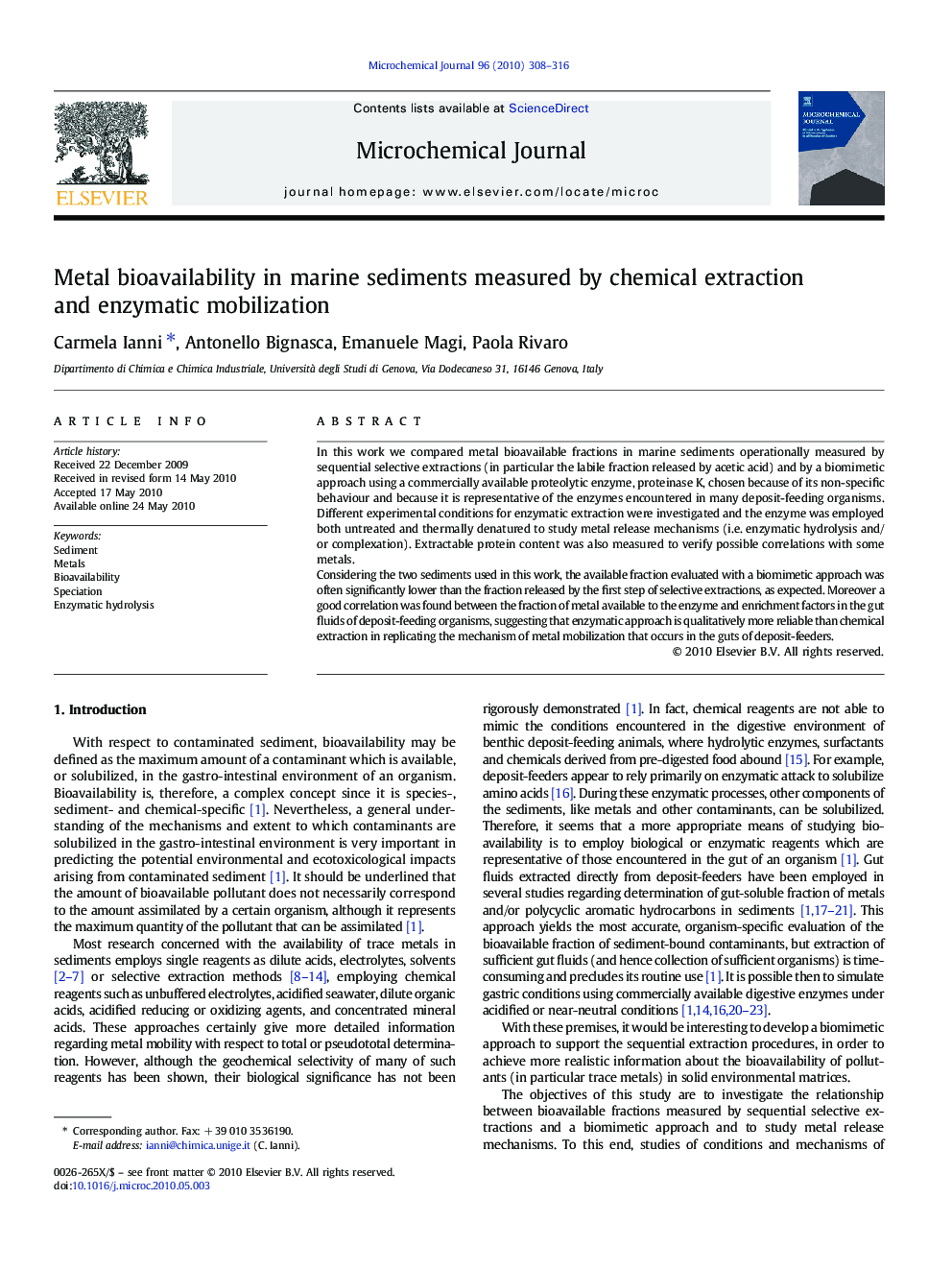| Article ID | Journal | Published Year | Pages | File Type |
|---|---|---|---|---|
| 1227929 | Microchemical Journal | 2010 | 9 Pages |
In this work we compared metal bioavailable fractions in marine sediments operationally measured by sequential selective extractions (in particular the labile fraction released by acetic acid) and by a biomimetic approach using a commercially available proteolytic enzyme, proteinase K, chosen because of its non-specific behaviour and because it is representative of the enzymes encountered in many deposit-feeding organisms. Different experimental conditions for enzymatic extraction were investigated and the enzyme was employed both untreated and thermally denatured to study metal release mechanisms (i.e. enzymatic hydrolysis and/or complexation). Extractable protein content was also measured to verify possible correlations with some metals.Considering the two sediments used in this work, the available fraction evaluated with a biomimetic approach was often significantly lower than the fraction released by the first step of selective extractions, as expected. Moreover a good correlation was found between the fraction of metal available to the enzyme and enrichment factors in the gut fluids of deposit-feeding organisms, suggesting that enzymatic approach is qualitatively more reliable than chemical extraction in replicating the mechanism of metal mobilization that occurs in the guts of deposit-feeders.
